Somewhere South of the Spanish mainland, hugging the Moroccan coastline and boasting Saharan summer temperatures, is an archipelago of islands known as The Canaries. Arguably, the most diverse and interesting of these is the third largest and second-most populous island, Gran Canaria. This is otherwise known as the Grand Canary Island.
A quick google image search will reveal golden beaches, rugged rocky coastlines, both volcanic and desert landscapes, resorts and cute historic towns, which can be a little overwhelming for an island only 602 square miles.
Which poses the question: what is Gran Canaria like?
About Gran Canaria
Gran Canaria is only one island and only part of the autonomous community known as the Canary Islands. Officially being part of Spain, the official language is Castilian Spanish.
However due to heavy dependence on tourism, a large portion of the population can understand and speak English. Many people also understand German.
The population of Gran Canaria is roughly 850,000 of the 2.2 million who inhabit the Archipelago.
The Canary Islands have two provincial capital cities; Santa Cruz de Tenerife (on the island of Tenerife) and Las Palmas de Gran Canaria (on Gran Canaria).
The official currency is the Euro. This is, of course, all important information for visitors, but it does not capture the soul of Gran Canaria.
What part of Gran Canaria is the best?
With an abundance of varied natural and artificial sites, Gran Canaria has a little bit of something for everyone. Being only roughly 50 miles in diameter, it does not take long to travel between locations. Staying in the colourful city of Las Palmas provides great connections and easy access all over the island. It also provides easy access to the beach.
The airport, and your most likely form of entry to the island, is located a little to the South of the city, but is well connected and easily reached.
Another place worth considering is Maspalomas, an LGBTQ+ friendly seaside town on the island. Maspalomas caters well for English tourists, being the home of an English-language cinema and Gran Canaria’s only newspaper in English. The town is well connected to Las Palmas and the rest of the island.
The town is frequented as a day destination for the 7.5 mile Maspalomas beach and access to the iconic Maspalomas dunes. Lastly, at the other end of the Maspalomas beach, you will find Playa del Inglés, roughly translated as “The Englishman’s Beach”. This is a sea resort on the South of the island offering Gran Canaria’s most vibrant nightlife.
The beach itself is a glorious stretch of golden sand. The resort is a popular choice for holidaymakers who do not wish to stay in Las Palmas itself.
So what is Gran Canaria like to visit as a tourist? What is there to do? Where are these sites? What makes this place so unique?
You may also like: Guide to travel from Lanzarote to Fuerteventura by Ferry
The best places for nature lovers
Gran Canaria is only a 93 mile stone’s throw away from Northern Africa. This is immediately visible when you first lay your eyes upon the Maspalomas Dunes. Here, you can lose yourself in vast sandy landscapes, all within sight of civilisation.
When it gets too warm, you can easily meander down to the Playa Maspalomas to cool-down in the Atlantic. Another must for the nature buffs is the hiking around and up to the Roque Nublo.
Winding through the area around this volcanic crag are a multitude of hiking trails for all difficulties, ranging from short loops to whole day treks. For those who are nervous about longer hikes but still want to see the rock, it is possible to drive almost the entire way, albeit on roads which are best traversed in better weather.
The finest panorama of the entire island is atop the Pico de las Nieves. Standing proudly at 1949 metres above sea level, here are the best views of the entire island. Again, it is possible to drive almost all the way to the top for those who don’t want to feel their feet aching for the rest of the holiday.
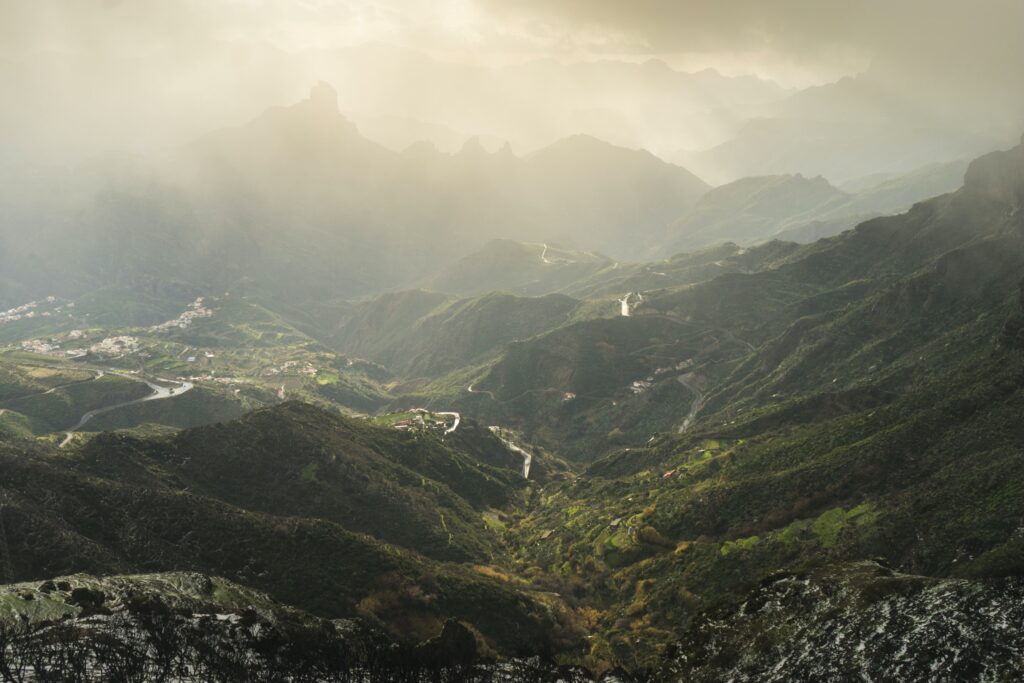
Best beaches in Gran Canaria
Being a small island in the middle of the ocean, Gran Canaria has no shortage of golden sand beaches. This is perfect for those who want to return home with jealousy-inducing tans and for those parents who want to relax while the kids are also entertained.
One of the most famous is Amadores Beach. Next to the calm clear water, you will find all the amenities you could ask for at a public beach.If you are staying in Las Palmas, the Playa de Las Canteras is right on your doorstep. The beach is generally recognized as one of the best urban beaches in all of Spain.
Popular with both tourists and locals, the iconic beach is a must for anybody visiting the island.

If you want to get away from the more popular spots, consider visiting Puerto de Mogan; a popular market and resort. While it is difficult to completely escape the crowds on such a small island, the lagoon and attached beach are considerably more peaceful than Amadores or Las Canteras. It is well worth a day trip, even for those staying elsewhere.
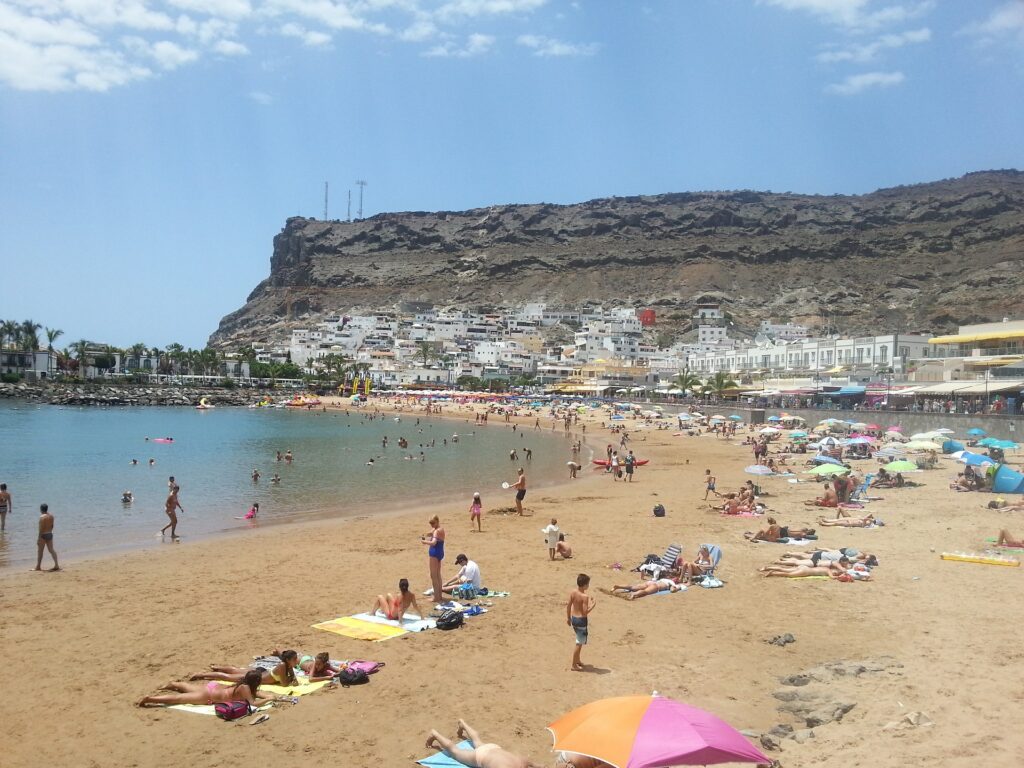
Best places to eat out in Gran Canaria
Eating out in Gran Canaria is reasonably priced, though like any tourist hub, is not exactly cheap. The smaller and more local restaurants are of course more affordable than the luxurious hotel restaurants on the seafront, though that comes at the potential cost of a translated menu.
According to budgetyourtrip.com, the average traveller spends 27€ a day on meals. The average price of a half-litre of draught beer is roughly 2,50€. This is generally cheaper than the Spanish mainland, but growing interest in The Canaries as a tourist destination is rapidly inflating these prices.
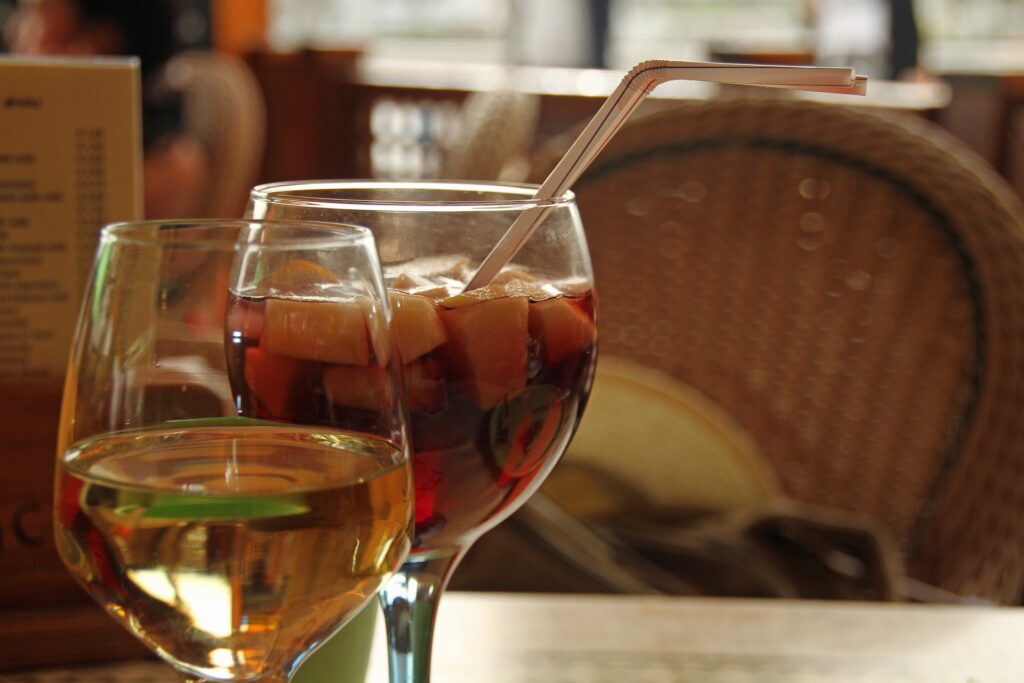
The local cuisine focuses largely on fresh, high quality and locally sourced ingredients. The style is a blend of Northern African cuisine and Spanish cuisine. This makes sense due to the the island’s geographical location and political structure.
If you want to find the best ingredients, to cook with at your guesthouse, for example, there is a huge marketplace called Mercado Agricola in the South of the island, where local vendors and farmers sell their produce.
Las Palmas, being the main city of the island, boasts the most restaurants of both local and international cuisine. It is easy to lose track of time watching the sunset from one of the many open terraces or beachside restaurants.
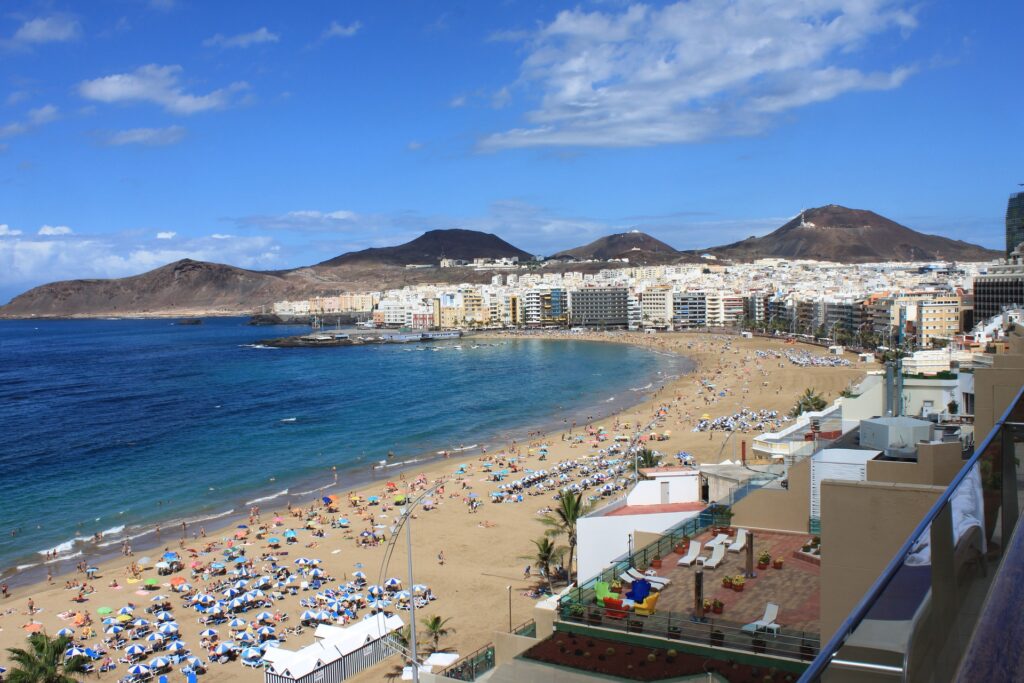
Make sure you try the local potatoes; the nutrition-rich volcanic soil creates some uniquely flavoured spuds.
After the Spanish conquests, the Canary Islands became a stopover for sailors en route to the Americas, who brought back the potato from South America. As a result, you will find local potatoes in many of the Canarian dishes.
Best culture plans in Gran Canaria
Up in the hills, you can find the picturesque town of Figras; a small town made famous by a unique street called Paseo de Canarias. This is a quirky street with a cascading fountain running down the middle and a thin staircase on either side. You may well recognise it from travel brochures of the island.
Just a short trip inland from Las Palmas de Gran Canaria, you can find the small town of Teror. With a well preserved old town and a large display of original local architecture, the town is a snapshot into the past. On Sundays, you can also find a local market set up here.
The iconic church of Arucas is also worth a visit. The church stands proudly over the town of Arucas and the intricately decorated towers can be seen from many miles away.
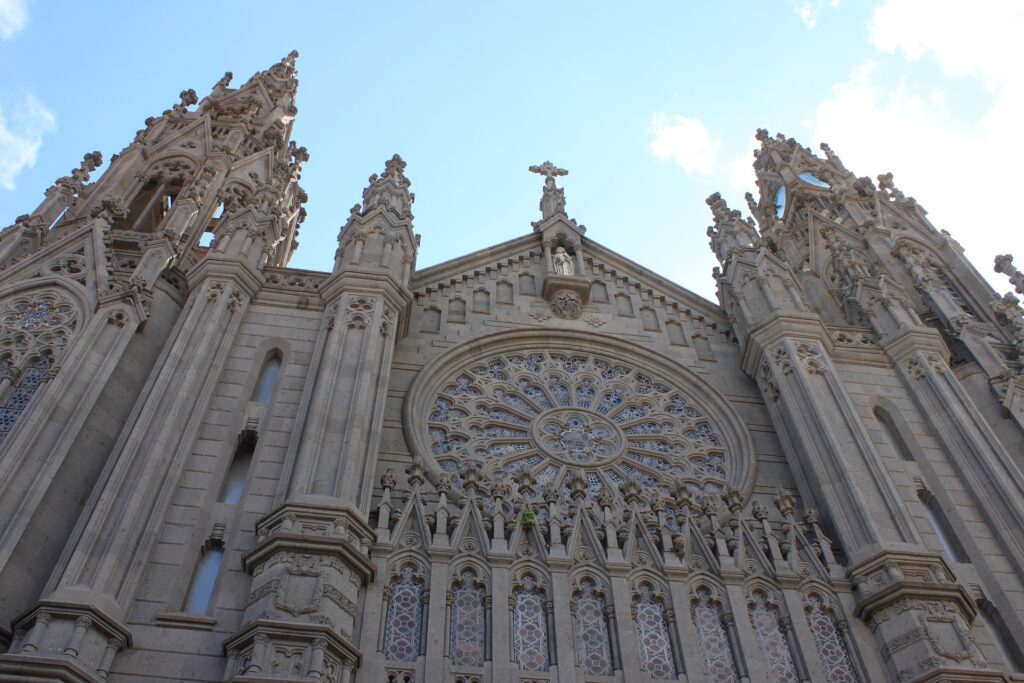
Lastly, be sure to check out the Monastery of Valeron. Carved into the cliffside are a little under 300 caves and rooms which date back to the end of the 15th century.
Is it safe to visit Gran Canaria?
Just like most European tourist spots, Gran Canaria does have its share of pickpockets. Providing you use a little common sense, you should not encounter any problems. Don’t leave your belongings unattended on beaches. Be mindful of your valuables on busy shopping streets and markets. Only carry what you need with you when you leave the hotel.
If you are feeling nervous, make use of the safe in the hotel. Aside from the occasional pickpocket, the Canary Islands are considered to be an extremely safe destination. Even at night, it is safe to walk around the streets without too much of a worry. The locals rely heavily on tourism for income, and so visitors are treated respectfully.
Tenerife or Gran Canaria?
Gran Canaria is not the only island in the archipelago, and naturally, the other islands surrounding Gran Canaria also have much to offer. Tenerife and Gran Canaria have a natural rivalry (as many places in close proximity around the world have). As you might expect, the residents of each island have only negative things to say about the other.
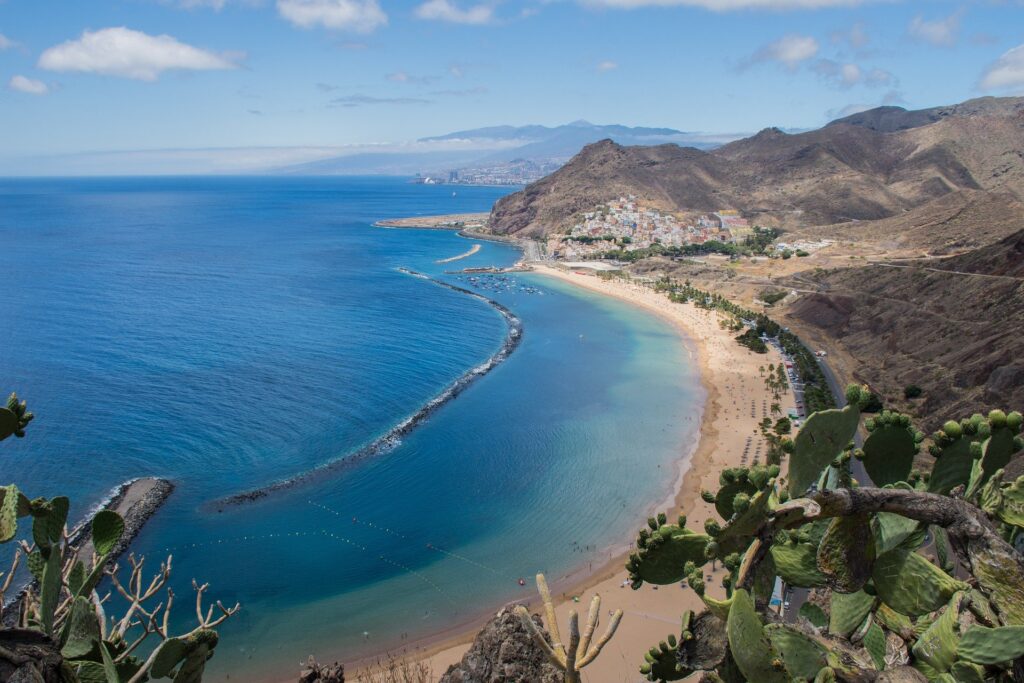
Tenerife is the largest and most populated island in The Canaries. It arguably boasts more historic towns, more luxurious dining and a more vibrant nightlife, whereas Gran Canaria is better known for diverse scenery, breathtaking natural landscapes and unspoiled beaches.
Also, where it is less popular than Tenerife, prices on Gran Canaria are a little cheaper. It is also that bit easier to escape the bustling crowds during peak season. Both islands have comparable weather, and for the most part, you can book a trip to any Canary island without worrying about temperatures getting low.
Both islands are very similar from a broad perspective, and you should not worry about missing out on nature during a trip to Tenerife, or compromising on nightlife while visiting Gran Canaria as both islands have something for every visitor.
What is Gran Canaria like for families?
Gran Canaria offers a wide variety of activities and sites to see, enough to entertain the entire family. The diversity of attractions results in there being something of interest for everybody, and the fantastic safety ratings mean that parents can be confident that their children are safe and well entertained while partaking in any activities.
For families who like “the package holiday” feel, there are plenty of resorts that will cater to your every need. There is often no need to leave the grounds of the hotel, and often excursions can be planned through the reception.
Furthermore, the small size of the island means no endless car trips with agitated and complaining kids, and when they are bored of hiking in the hills, it does not take long to change the scenery and get them to the nearest beach.
What is Gran Canaria like for couples?
The island might well appeal to nature-loving couples, however, the resort atmosphere and busy beaches make it quite hard to get away and be alone without venturing deep inside one of the national parks.

If you are willing to share the romance of your vacation with every other couple at the viewpoints at sunset, of course, it is not a problem. Also, If you are willing to stay away from the beaches and up in the hills, you can also find some solitude when the sun goes down and the tour busses turn off their engines for the day.
If you travel off-season, you are more likely to be met with some peace and quiet. It just takes a little tactical thinking and careful planning. It is also possible to escape the holidaying families by venturing out after sundown.
If you are a couple who likes to party, the Playa del Ingles and Puerto Rico are vibrant with nightlife, and you will find it very easy to spend a few hours soaking up a cocktail or two into the early hours of the morning.
Final note
Gran Canaria is a fantastic destination with a huge diversity of landscapes and activities to indulge in, from perfect sandy beaches to dramatic volcanic mountainous regions.
The small island is well connected by roads and public transport and everything on offer is easily accessible.
The island is particularly well suited for families and groups, although the huge variety of places means that everybody can find something that they enjoy in Gran Canaria.
And, just in case you do run out of things to see and do, you are only a short trip away from any of the other Canary Islands.
You may also like:: Where To Stay in Fuerteventura

